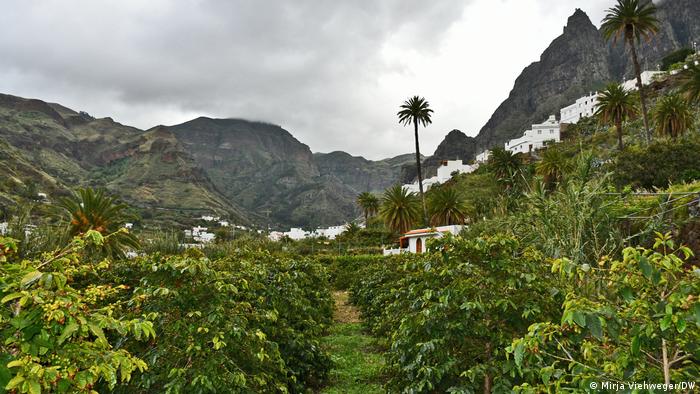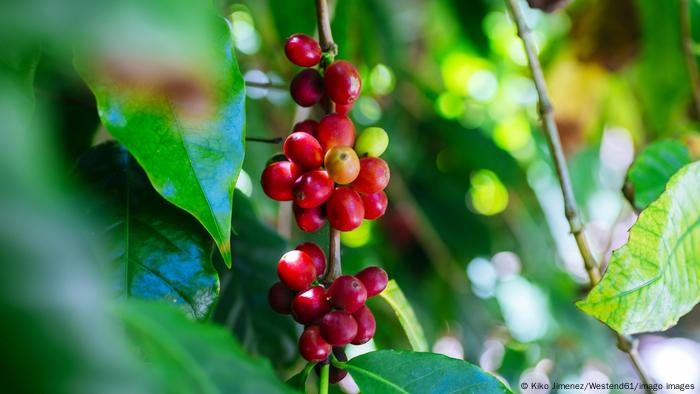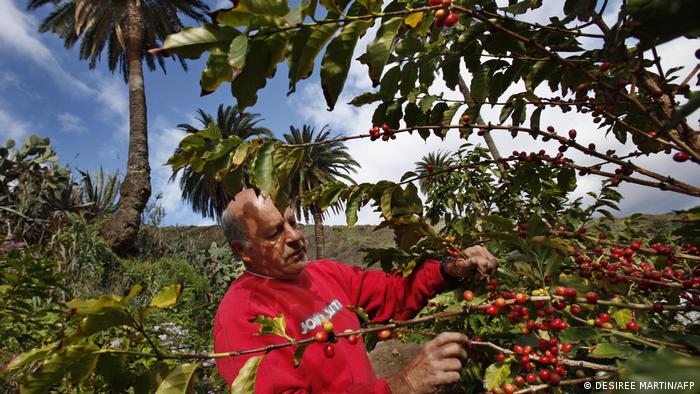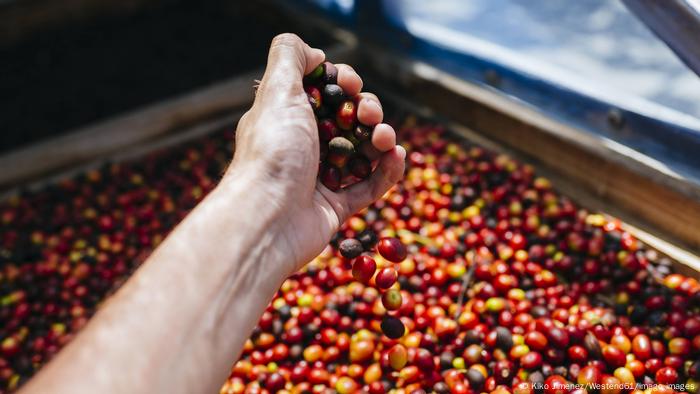Coffee from the Canary Islands
Europe is not really known for coffee cultivation. And yet the beans have been grown in the Valle de Agaete on Gran Canaria since the 19th century. Find out more in part ten of our series "Extreme Places".

Europe's only coffee plantation can be found on the Spanish Canary Island of Gran Canaria
It is said that it was a shepherd in the region of today's Ethiopia who discovered the coffee plant. He had observed that some of his goats leapt around wildly after they had eaten from the red fruit of the plant. This was a coincidence that laid the foundations for the creation of one of the most popular drinks in the world today, and the multi-billion dollar industry that surrounds it.

Ripe coffee beans can be recognised by their deep red colour
A particularly large amount of coffee is consumed in European countries, above all in Finland. Every Finn uses up an average of around 12 kilograms a year – that's three to four cups a day. But coffee is also the number one favorite drink in Germany, even ahead of water and beer.
The valley of the coffee farmers
The plants are grown in many parts of the world, with countries such as Brazil, Columbia, Indonesia and Ethiopia all known for their coffee production. Few people though are aware that there are also regions in Europe where coffee plants grow: in the mild climate of the Azores and the Canary Islands. Here some inhabitants have coffee plants in their own gardens and harvest the beans for their private consumption.

Spring-like temperatures all year round: ideal conditions for coffee farmers in Gran Canaria
Europe's largest growing region – and the only really commercial one – is located on Gran Canaria. The Spanish island off the coast of North Africa offers the perfect conditions: mild temperatures throughout the year, and fertile lava soils. Consequently, coffee thrives amidst the lush vegetation in the elongated Valle de Agaete valley.
The plants are grown in many parts of the world, with countries such as Brazil, Columbia, Indonesia and Ethiopia all known for their coffee production. Few people though are aware that there are also regions in Europe where coffee plants grow: in the mild climate of the Azores and the Canary Islands. Here some inhabitants have coffee plants in their own gardens and harvest the beans for their private consumption.

Spring-like temperatures all year round: ideal conditions for coffee farmers in Gran Canaria
Europe's largest growing region – and the only really commercial one – is located on Gran Canaria. The Spanish island off the coast of North Africa offers the perfect conditions: mild temperatures throughout the year, and fertile lava soils. Consequently, coffee thrives amidst the lush vegetation in the elongated Valle de Agaete valley.
As a harvest worker on a coffee finca
DW reporter Hendrik Welling travelled to the Canary Islands for the series "Europe to the Maxx" on the culture and lifestyle magazine "Euromaxx". On one of the small plantations he was introduced to the art of coffee cultivation and harvesting – and he got to experience first-hand how much work goes into each cup. Find out how he liked the coffee from the Canary Islands in our video.
Between 1,500 and 2,000 kilograms of coffee are produced in the Agaete valley every year, under the motto 'class instead of mass'.

From picking to drying to roasting: coffee production on the Canary Islands is pure manual labour
The coffee beans are harvested by hand, and only the ripe, red fruit lands on the drying screen. Gran Canaria's coffee farmers also undertake further processing all the way to roasting directly on-site. The coffee from Agaete is not exported. Thus, visiting coffee-lovers can get something here that's a real rarity in Europe: a regionally-grown cup of Joe.
Service tips:
Address: Valle de Agaete, Province of Las Palmas, Gran Canaria, Spain
Getting there: From Las Palmas de Gran Canaria it's around 30 kilometers to Agaete by bus or rental car.
Special tip: Harvest time is from March to June. Some fincas offer guided tours during which visitors can learn about coffee growing.
The accompanying book

Europe at its most extreme: the series "Europe to the Maxx" on DW's lifestyle and culture magazine "Euromaxx" makes Europe's superlatives experienceable – from extraordinary architecture to spectacular landscapes to unique cultural phenomena. Accompanying the series, the book "111 extreme places in Europe that you shouldn't miss" was published in cooperation with Emons Verlag. An alternative travel guide, both informative and entertaining. For avid travelers, fans of Europe and anyone who likes to show off with unusual pub quiz trivia. Full of guaranteed record breakers!
DW RECOMMENDS
An airport on the beach
No comments:
Post a Comment